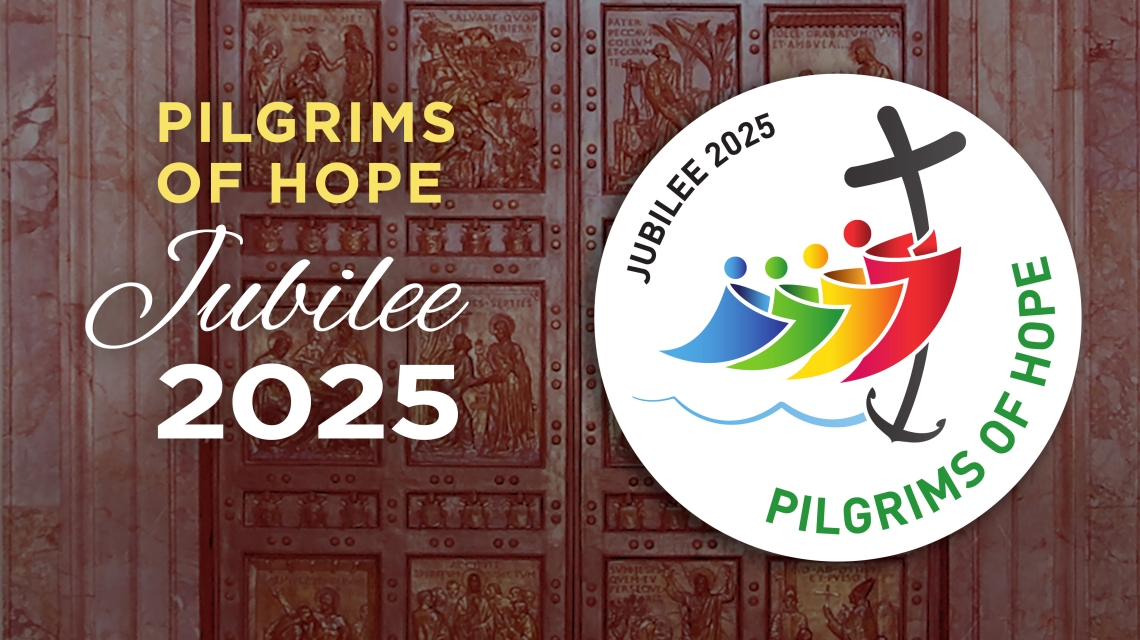What is a Jubilee Year?

What is a jubilee?
A jubilee is a holy year, established by the pope, that is intended to be a transformative time for Catholics. The year is to one of joyous celebration, prayer, and reconciliation.
The celebration of jubilees goes back to ancient times. As explained in the Book of Leviticus, a jubilee, which occurred every 50 years, was a time to let the land rest.
“You shall count seven weeks of years—seven times seven years—such that the seven weeks of years amount to forty-nine years. Then, on the tenth day of the seventh month, let the ram’s horn resound; on this, the Day of Atonement, the ram’s horn blast shall resound throughout your land. You shall treat this fiftieth year as sacred. You shall proclaim liberty in the land for all its inhabitants. It shall be a jubilee for you, when each of you shall return to your own property, each of you to your own family” (Leviticus 25:8-10).
The word “jubilee” comes from the Hebrew word “yobel,” which refers to the ram’s horn used to announce a jubilee in the Old Testament.
In addition to being a time to rest the fields, the jubilee was intended as a time to reestablish a proper relationship with God, with one another, and with all of creation. It also involved the forgiveness of debts and the return of misappropriated land.
The first jubilee called by a pope occurred in 1300. It was declared by Pope Boniface VIII. The intent at that time was to celebrate a jubilee every 100 years, but in 1343, Pope Clement VI reduced the time between jubilees to 50 years, and then in 1470, Pope Paul II made it every 25 years, a tradition that has remained ever since.
In addition to the jubilee years every 25 years, popes sometimes also proclaim extraordinary jubilees. For instance, in 2015, Pope Francis proclaimed the Year of Mercy as an extraordinary jubilee.
What are some of the characteristics of a jubilee year?
Pilgrimages
A jubilee is meant to be a time of journeying. Originally, that meant a pilgrimage to St. Peter’s Basilica in Rome, Italy. While that is still encouraged for the faithful who can make the trip, a pilgrim's journey can take other forms. It could include visiting any pilgrimage church or site, participating in a jubilee event, or going on a spiritual journey focused on increased participation in liturgies, catechesis, prayer, reconciliation, and increased works of charity.
Holy Doors
The opening of a holy door by the pope marks the official beginning of a jubilee. Pope Francis opened a holy door at St. Peter’s Basilica on December 24, 2024, and then on December 26, he opened a second holy door at Rebibbia New Complex Prison in Rome, Italy.
The Holy Door is one of the most significant signs of a jubilee because it calls those who enter through it to walk in holiness of life. In crossing the threshold of the holy door, a pilgrim is reminded of the passage from Chapter 10 of St John’s Gospel: “I am the door. If anyone enters by me, he will be saved.” Passing through the holy door expresses the decision to follow and be guided by Jesus, who is the Good Shepherd.
Indulgences
A jubilee year also often provides an opportunity for the faithful to receive a plenary indulgence. A plenary indulgence is a grace granted by the Catholic Church through the merits of Jesus Christ to remove the temporal punishment due to sin. When we sin, we commit an offense against God, and while we receive forgiveness through the sacrament of reconciliation, the effects of that sin sometimes remains. A plenary or full indulgence heals that wound, removing all temporal punishment due to that sin, while a partial indulgence removes some temporal punishment.
Learn more about plenary indulgences and the conditions for receiving one during the jubilee year.









